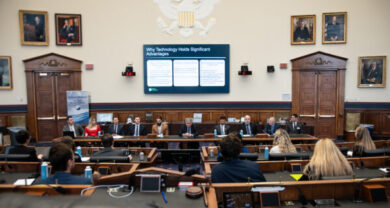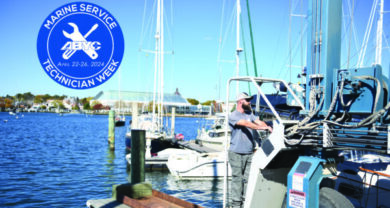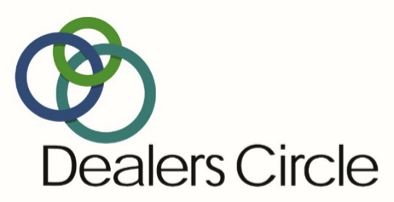Painting the Market Black
Jim Seidel, an assistant marketing manager with Interlux, was out visiting one of the stores that carries his company’s products a while back, when he ran across something unusual.
It was a can of 15-year-old Interlux paint the dealer had inadvertently left out on one of his shelves.
Not wanting an unsuspecting customer to wander in and purchase the paint by accident, Seidel bought it himself. Then, for the fun of it, decided to have the quality-control people at Interlux run their usual battery of tests to determine if the paint was up to snuff.
The teenage liquid passed every one.
“They were amazed,” Seidel says. “I was amazed.”
Optimism reigns
You don’t run across many 15-year-old products in the paint and coatings segment of the marine industry these days. Competition, innovation and regulation are among the factors that have seen to that. Throw in the dramatic rise of materials prices over the past year, and it’s no surprise that companies are busy bringing new products to market or tweaking others to maximize profits in what most everyone seems to agree is an otherwise very positive business climate, and may continue to be for the foreseeable future.
“Things are going great,” says Erik Norrie, CEO of New Nautical Coatings. “Obviously materials prices are still going up, but they are going up for everybody. It’s just affecting the price of paint for the end user really. I don’t know of any companies that are just eating the increases.”
Norrie says business at his company, which manufactures nautical coatings, composite materials and accessories for all vessels, under the Sea Hawk brand name, is up 70 percent over last year. That’s twice as large an increase as the company expected and budgeted for.
“We’re just going like gangbusters,” Norrie says.
Viking Yachts, Carver and the Hinckley yards have all recently begun using the Sea Hawk product, according to Norrie. He attributes his company’s successful market penetration to an influx of advertising dollars that weren’t available in the past, and positive word of mouth throughout the industry.
Pettit Paints
Officials at Pettit Paints say they are also pleased with the way business has been going and expect that to continue despite the price increase which the materials squeeze has necessitated.
“For bottom paints, for us and Interlux and everyone else making bottom paints, copper is by far our largest raw material,” says John Ludgate, vice president of sales and marketing for Pettit. “In some of our paint we use up to 16 pounds of copper. So this has had a tremendous effect on our cost structure.
“We’ve raised prices about 10 percent in the last year, so that will be felt this spring, when consumers go to purchase it.”
Ludgate says his company sells about 70 percent of its bottom paint between March and June, and, although materials prices really began their sharp climb one year ago, Pettit wasn’t able to fully pass those increases along to consumers until this year. As Ludgate explains, “We’re in a consumer cycle. We are in the West Marine catalog and in stores and stuff, and it’s such a seasonal business that you really only get to adjust prices once a year.”
So when the materials prices went up last year, Pettit had already published its prices in places like the West Marine catalog, and was, in some cases, locked into a certain price.
Pettit is cautiously optimistic that materials prices are eventually going to start easing back down. Once dormant copper mines are currently being spun back up into production, which should relieve some of the strain. But that takes time.
Another solution Pettit is exploring is to reduce the amount of copper it uses in some of its products. In some paints the company produces, almost 75 percent of the product’s weight is made up of copper. That copper is mixed with other additives to make the final product.
“In the past, the additives were expensive,” Ludgate says. “But now that the economics have kind of changed, it may be better to use a little more additive if you can use maybe 10 percent less copper.”
Of course, changing the formula of a paint is no quick fix. The change itself might be accomplished fairly quickly, but by the time the product has been submitted to the Environmental Protection Agency to change its registration, 18 months may be required before the reformulated paint can be brought to market.
And who knows where copper prices will be a year-and-a-half down the road?
“When you’re squeezed you just try to fine-tune the whole process,” Ludgate says. “Maybe you can optimize the size of the batch you make the products in. It may be worth buying larger mixers or different kinds of pumps that can save money whereas in the past it didn’t seem that relevant.
“But now the economics have changed and so all of a sudden you can justify something that maybe two or three years ago you wouldn’t have thought about.”
However, the fact remains that bottom paint is still a necessity, and the market isn’t going to dry up simply because of an increase in price. Ludgate reminds people that when many of the ablatives were first introduced in the 80s they were selling for $250 a gallon.
“We’re kind of getting back to almost $200 a gallon with some of the premium products,” Ludgate says. “But we’re all in the same predicament. We and our competitors are pretty much buying the same raw materials and pretty much just mixing them together in slightly different ratios. We’re not as concerned about market share, it’s basically just trying to balance our internal profitability.”
New to market
Although it actually came out last year, Pettit’s Vivid anti-fouling paint missed most of the company’s most lucrative selling window in 2004, and the company has high hopes for its sales in 2005. Vivid is a multi-season, dual biocide that can be mixed using different formulas to create a variety of bright colors. The product can be used for trailer boats and dry stored boats.
Interlux also has some new products it’s excited about, including Perfection — a 2-part polyurethane gloss finish — and a new line of boatcare products, to clean, restore and protect boats.
Perfection is an updated version of an earlier product that has new pigments, resins and solvents as well as a new technology the company calls HALS, which stands for Hindered Amine Light Stabilizers. HALS protects the paint resin by attaching to free radicals created by sunlight, neutralizing their harmful effects, then regenerating as the neutralized free radicals are released.
The boatcare line is designed for use on fiberglass, wood, metal and painted surfaces, and Interlux says the products do not contain any silicon oil and will not contaminate surrounding surfaces when it is time to paint.
“This is new for us in North America,” Seidel says. “We’ve been selling [these kinds of products] in Europe for about 10 years, and we brought it over here and did a test market to see if there was any kind of market acceptance for it.”
Seidel said Interlux put the products in 30 stores around North America last year to test the waters, and the company was happy with the feedback it got, although it did have to change a couple of the formulas.
One was the boat soap the company was selling. Simply put, it didn’t have enough suds.
“We had a really good boat soap, but it didn’t have much suds,” Seidel says. “So you put in two ounces and there were no suds. So people put in another two ounces, and another two ounces, and were like, ‘This stuff doesn’t work.’
“Now we don’t have enough money to teach people that suds don’t help you clean anything. So we just went to a different formula with more suds.”
New Nautical Coatings, will be bringing several new products to the market including a new anti-fouling product called Island 77, which is a new polymer technology that incorporates some new biocides and is performing well, Norrie says.
Another new product from the company is a paint called Trans Shield, which is made specifically for transducers, and is designed to keep barnacles from growing on sonar equipment while not interfering with the sonar frequency. There is also a new epoxy barrier coming out called Tuff Stuff, which has a 24-hour window that allows more time to apply the anti-fouling paint to the epoxy.
In addition, Norrie says that his company has really ramped up its R&D budget in the last few years and has a “whole lineup of other antifouling paints that are still in the testing phases.”
New Nautical Coatings has also begun a 12-month warranty on vessels painted with Sea Hawk products, stating that they won’t get any barnacles or growth and that if they do, their next haulout will be paid for by the company.
We want to get our product into the hands of the customer in the fastest way,” Norrie says. “We’re just trying to stay ahead of the curve.”




